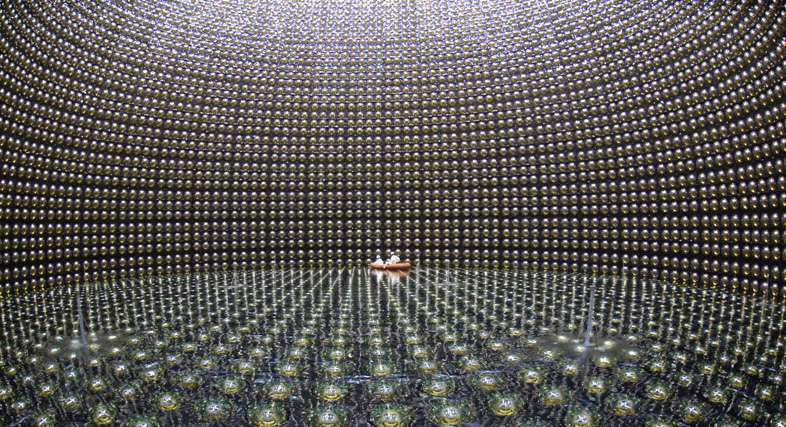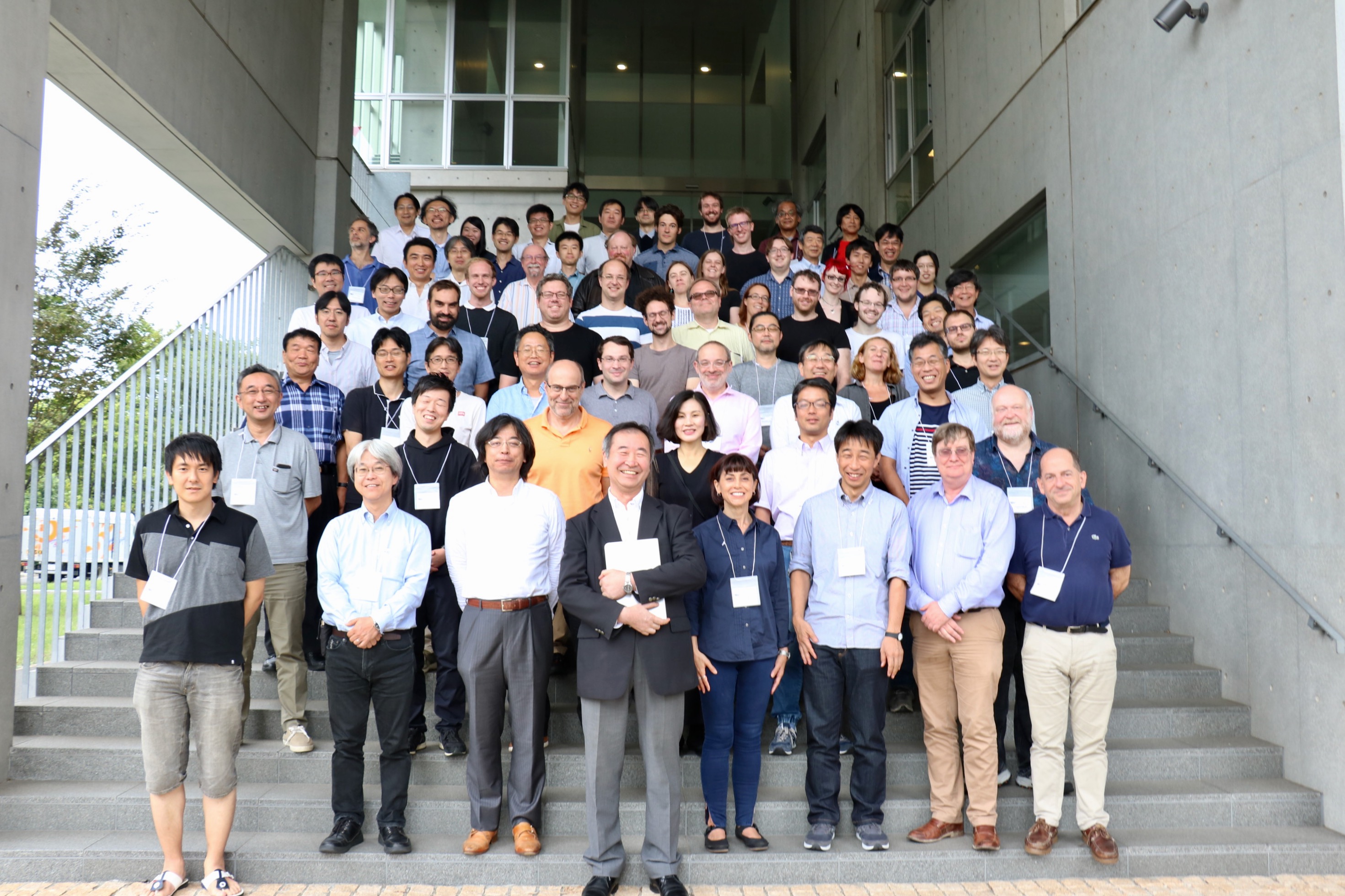At the recent meeting of the Hyper-Kamiokande (Hyper-K) proto-collaboration held from September 9-13, 2018, the University of Tokyo released a statement indicating its strong support for the Hyper-K project and a commitment to start construction as scheduled in April 2020. The statement, presented to collaboration members by Nobel laureate Takaaki Kajita, highlighted news that the Japanese Ministry of Education, Culture, Sports, Science and Technology has included seed funding for Hyper-K in its fiscal year 2019 budget request. The announcement has created great excitement amongst neutrino physicists around the world, including researchers at TRIUMF.
<image: the Super-K detector; credit: Kamioka Observatory, ICRR (Institute for Cosmic Ray Research), The University of Tokyo>
Hyper-K will be the successor to Super-Kamiokande (Super-K), a 41m tall and 40m diameter cylinder containing 50,000 tonnes of ultrapure water and 13,000 photomultiplier tubes (PMTs) that is buried 1000m under Mount Ikeno near Hilda, Japan. Like Super-K, the Hyper-K detector will detect the tell-tale signs of the water interacting with neutrinos from the atmosphere, or from the J-PARC accelerator laboratory in Tokai, Japan, 295km away, or the Sun (the two detectors, Super-K and Hyper-K, have and will enable the highest sensitivity searches for neutrinos that issue from exploding stars).
Neutrino interactions are extremely rare, so Hyper-K will be built 60m tall and 74 in diameter, filled with 47,000 PMTs and 258,000 tonnes of water. Hyper-K will build on Super-K’s sensitivity by a factor of 20; this significant increase in sensitivity stems from an 8-fold increase in the mass of the far detector and a 2.5-fold increase in beam power from J-PARC. These additions will allow Hyper-K to dramatically increase the capability to detect possible proton decay, so-called neutrino oscillations, as well as CP violation in neutrino interactions.
Canadian researchers have had a major impact on the current T2K experiment (Tokai-to-Kamiokande), constructing the main near detector components, time projection chamber and fine-grained tracker, the optical transition radiation beam monitor in front of the neutrino-production target and remote handling system in the target station. Canadian members have also led the analysis group and developed the analysis tools, including the new water Cherenkov event reconstruction code and the data fit framework of near and far detectors that serve to extract the neutrino oscillation result.
TRIUMF Research Scientist Akira Konaka was enthusiastic: “This is excellent news that we have long been waiting for. Twelve faculty members in Canada are preparing for the Hyper-Kamiokande project in the area of high intensity upgrade of the beam, a side experiment (EMPHATIC) to precisely predict the neutrino flux, a new water Cherenkov near detector (NuPRISM), and a photosensor with higher granularity and better timing (multi-PMT) to enhance Hyper-K’s sensitivity. We are excited to continue this fruitful exploration and collaboration in neutrino physics.”

<Image: members of the Hyper-K collaboration from the most recent collaboration meeting>
In 2013, the T2K experiment made the first direct observation of neutrinos changing from one flavor to another with the observation of muon neutrino to electron neutrino oscillations. This discovery, which was awarded the 2016 Breakthrough Prize in Fundamental Physics, opened the door to search for CP violation in neutrino oscillations (a phenomenon where matter and antimatter behave differently) using the enhanced capabilities of Hyper-K. The Hyper-Kamiokande proto-collaboration will now work to finalize designs and is seeking more international partners to join in this far-reaching new experiment.
You can read the original press release here.
